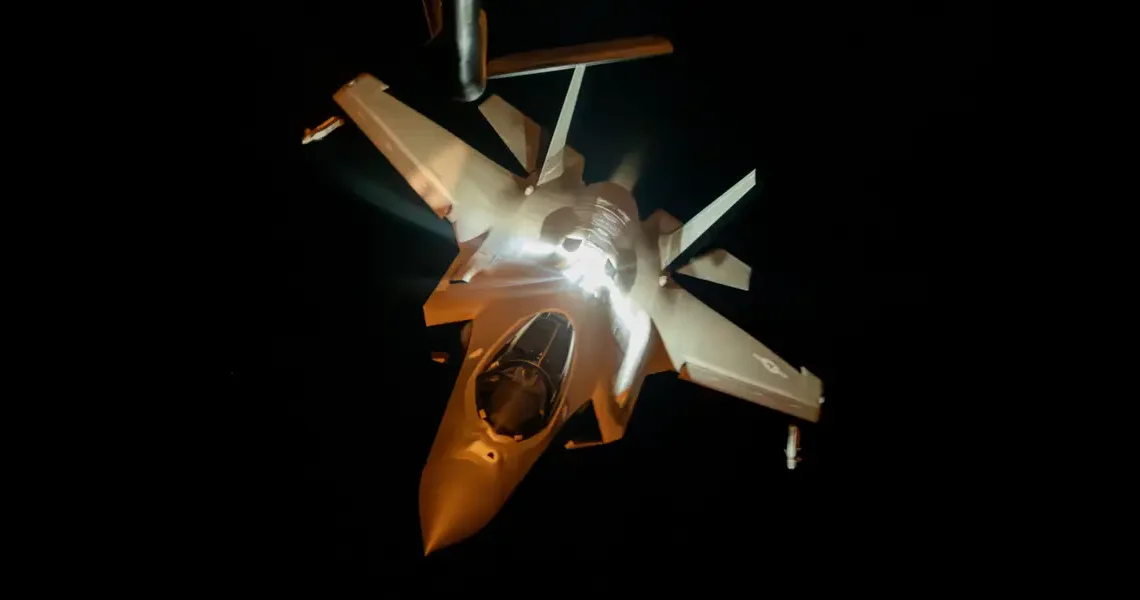The American F-35 stealth fighters that participated in the Operation Midnight Hammer strikes on Iran flew hundreds of miles deep into its airspace and were the last ones out, US military commanders revealed this week.
F-35A Lightning II aircraft assigned to the Utah-based 388th Fighter Wing escorted the B-2 Spirit stealth bombers that dropped over a dozen heavy bunker-buster bombs on Iran’s nuclear facilities in late June.
The F-35s suppressed Iran’s air defenses and cleared the way for other combat aircraft, including the seven B-2s, during the complex nighttime operation.
“We flew hundreds of miles into Iran, escorting the B-2s the entire way,” Lt. Col. Aaron Osborne, commander of the 34th Fighter Squadron, shared in a US Air Force story. “We employed weapons to great effect against multiple surface-to-air missile sites.”
After the B-2s dropped a total of 14 bunker-buster bombs — 30,000-pound munitions called GBU-57 Massive Ordnance Penetrators — on Iranian nuclear facilities, the F-35s protected their exit from the attack zone.
The advanced US fighter jets were the last ones out of Iranian airspace, the 388th Fighter Wing said on Monday, sharing new details on the operation. US officials said Tehran did not fire at any American aircraft during Midnight Hammer.
The airmen of the 388th Fighter Wing, located at Hill Air Force Base in Utah, train nearly every day for suppression of enemy air defense (SEAD) missions, the military said.
The F-35 pilots can use the jet’s stealth, radar, targeting systems, and advanced sensors to detect surface-to-air missile threats, as they did in Iran.
The F-35 fighter, built by US defense giant Lockheed Martin, has been battle-tested against a wide range of threats in a mix of engagements since its first flight nearly 20 years ago — from Middle East wars to penetrating Israeli strikes inside Iran to the downing of Russian drones over NATO territory. The jet is flown by militaries around the world, including many NATO allies.
While the F-35 Joint Strike Fighter is considered a top fifth-generation fighter jet, it is also the world’s most expensive weapons program, with a lifetime cost of $2 trillion, and has faced sustainability and maintenance challenges in recent years, leading several Trump allies to publicly criticize the aircraft and its capabilities.
And tensions earlier this year between the Trump administration and some European allies have also raised questions about and even appeared to threaten future sales of the stealth jet.
However, Midnight Hammer commanders praised the F-35 and said that its participation in the operation highlights its combat prowess.
“The effectiveness of this strike validated all of the capabilities of the F-35 we’ve been talking about for years — stealth, lethality, sensor-fusion, being a force multiplier,” said Col. Charles Fallon, 388th Fighter Wing commander.
He said the operation relied on the F-35 pilots and their aircraft to perform, “and both proved more than capable.”
US forces struck three Iranian nuclear facilities — specifically Fordow, Natanz, and Isfahan — with 75 precision weapons during Operation Midnight Hammer, which came amid a broader war between Iran and Israel. American officials said that the munitions included the bunker-busters and dozens of Tomahawk cruise missiles.
Beyond the F-35s and B-2s, American F-22 fighter jets, as well as F-15s and F-16s, and dozens of aerial refueling tankers participated in the surprise operation, along with a US Navy missile submarine.
Read the original article on Business Insider
The post F-35 stealth fighters spearheaded strikes deep inside Iran and were the last ones out, Midnight Hammer commanders say appeared first on Business Insider.




